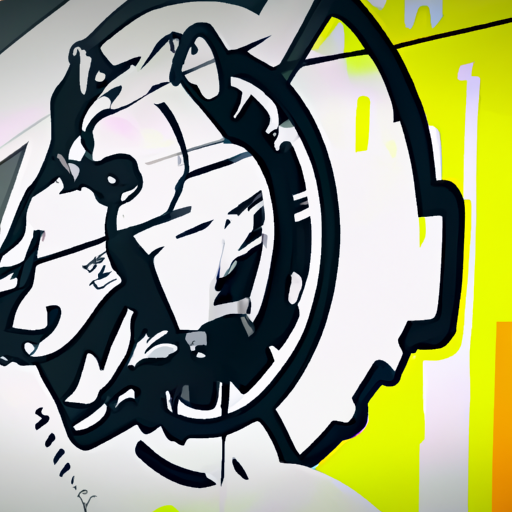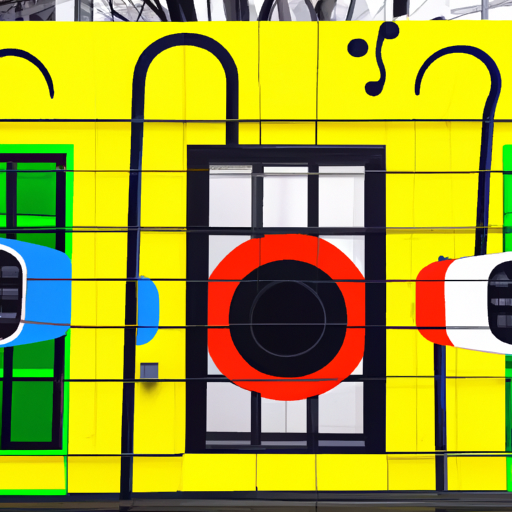
-
Table of Contents
Street Art Influence on Urban Graphic Design

Street art has long been a powerful form of expression, transforming the urban landscape into a vibrant canvas of creativity. Over the years, this underground movement has not only gained recognition as a legitimate art form but has also significantly influenced the world of graphic design. From typography to color palettes, street art has left an indelible mark on urban graphic design, shaping the way we perceive and interact with our surroundings. In this article, we will explore the various ways in which street art has influenced urban graphic design, examining its impact on typography, color theory, and visual storytelling.
The Rise of Street Art
Street art emerged as a form of artistic expression in the late 1960s and early 1970s, primarily in urban areas. It was born out of a desire to challenge the traditional art world and bring art to the masses. Graffiti, stencils, murals, and wheat-pasting became the tools of choice for street artists, allowing them to make bold statements and reclaim public spaces.
What started as an act of rebellion has now become an integral part of the cultural fabric of many cities around the world. Street art festivals, such as Art Basel Miami and Pow! Wow! Hawaii, attract thousands of visitors each year, showcasing the talent and creativity of street artists from all corners of the globe.
Typography: Breaking the Mold
One of the most significant influences of street art on urban graphic design is in the realm of typography. Street artists have pushed the boundaries of traditional typography, experimenting with letterforms, and creating unique styles that challenge conventional design principles.
Take, for example, the work of renowned street artist Banksy. His distinctive stenciled lettering has become instantly recognizable, often accompanied by thought-provoking messages. Banksy’s use of bold, distorted letterforms has inspired graphic designers to think outside the box and explore unconventional typographic treatments.
Another notable example is the work of street artist Retna. His calligraphic style, influenced by ancient scripts and graffiti, has had a profound impact on urban graphic design. Retna’s intricate letterforms, characterized by their fluidity and complexity, have inspired designers to incorporate hand-drawn elements and custom lettering into their work.
Color Theory: Vibrancy and Contrast
Street art is known for its vibrant color palettes, often using bold and contrasting hues to grab attention and create visual impact. This emphasis on color has influenced urban graphic design, encouraging designers to experiment with unconventional color combinations and push the boundaries of traditional color theory.
For instance, the work of street artist Os Gemeos is characterized by its vibrant, saturated colors. Their use of bright yellows, blues, and reds creates a sense of energy and liveliness in their murals. This bold approach to color has inspired graphic designers to incorporate vibrant hues into their work, injecting a sense of dynamism and excitement into urban design projects.
Additionally, street art often utilizes contrasting colors to create visual interest and make a statement. The juxtaposition of complementary or clashing colors can evoke strong emotions and draw attention to specific elements within a design. Graphic designers have adopted this technique, using contrasting colors to create focal points and guide the viewer’s eye.
Visual Storytelling: From the Streets to the Screens
Street art is inherently narrative-driven, often telling stories or conveying messages through visual imagery. This focus on visual storytelling has had a profound impact on urban graphic design, as designers seek to create engaging and immersive experiences for their audiences.
One example of this influence is the rise of large-scale murals in urban environments. These murals often depict scenes or characters that tell a story, transforming once-ordinary walls into captivating visual narratives. Graphic designers have embraced this approach, using large-scale illustrations and murals to create immersive brand experiences and communicate complex ideas.
Another way street art has influenced visual storytelling in urban graphic design is through the use of symbolism and metaphor. Street artists often incorporate symbols and metaphors into their work to convey deeper meanings or social commentary. Graphic designers have adopted this technique, using symbolism to add layers of meaning to their designs and create a more profound connection with the audience.
Conclusion
Street art has had a profound influence on urban graphic design, shaping the way we perceive and interact with our surroundings. From typography to color theory and visual storytelling, street art has pushed the boundaries of traditional design principles, inspiring designers to think outside the box and create bold, impactful designs.
As cities continue to embrace street art as a legitimate art form, we can expect to see even more cross-pollination between street art and urban graphic design. The fusion of these two worlds will undoubtedly lead to exciting and innovative design solutions that redefine our urban landscapes.
So, the next time you walk down a city street, take a moment to appreciate the influence of street art on the graphic design that surrounds you. It’s a testament to the power of creativity and the ability of art to transform our everyday experiences.
